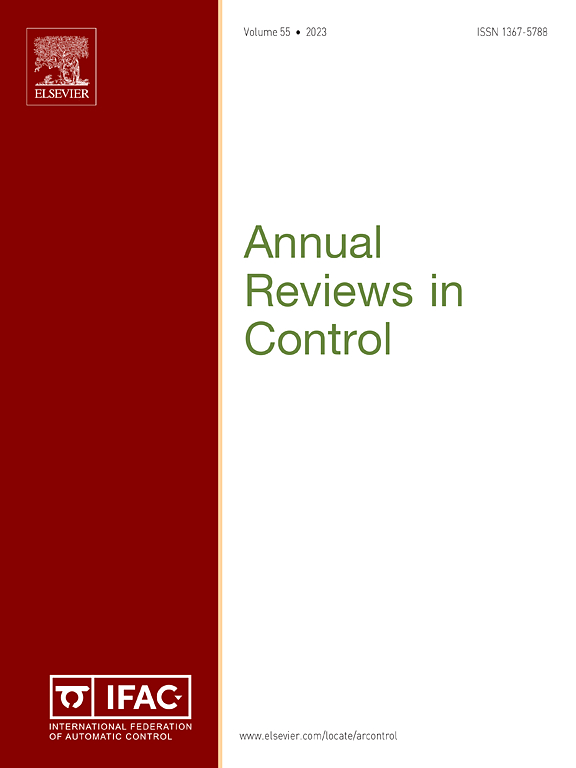互联动力系统的保结构模型约简
IF 10.7
2区 计算机科学
Q1 AUTOMATION & CONTROL SYSTEMS
引用次数: 0
摘要
本文提出了两类相互关联的动力系统的模型约简技术:第一类是大尺度线性系统与静态非线性系统之间的反馈互联,第二类是(多)线性动力系统之间的互联。对于第一类,我们提供了基于平衡和矩匹配的方法,适用于大型系统,通过减少线性部分,保持非线性完整。因此,原有的反馈互联结构也得以保留。此外,我们还提供了一个表示约简精度的约简误差界,该约简精度取决于线性部分的约简程度和非线性性质。此外,这些方法保持了(全局和增量)稳定性。对于第二类系统,我们提出了一种将子系统层面的降准精度规范与互联系统层面的相关规范联系起来的方法。这允许采用模块化的方法来保留高阶、相互连接的系统的结构。反过来,这促进了降阶系统的可解释性。此外,我们引入了互连线性系统的抽象约简概念,它使子系统的模块化约简成为可能,同时以一种计算可处理的方式考虑到互连系统其余部分的动力学。最后,这些方法还提供了一个错误界限,并保持了稳定性和(可选的)被动性。本文章由计算机程序翻译,如有差异,请以英文原文为准。
Structure-preserving model reduction of interconnected dynamical systems
This paper presents model reduction techniques for two classes of interconnected dynamical systems: firstly, feedback interconnections between large-scale linear systems and static nonlinearities and, secondly, interconnections between (many) linear dynamical systems. For the first class we provide both balancing-based and moment matching approaches that are applicable to large-scale systems, by reducing the linear part only and leaving the nonlinearity intact. Hence, the original feedback interconnection structure is preserved as well. Moreover, we provide a reduction error bound that expresses reduction accuracy depending on the level of reduction of the linear part and the properties of the nonlinearities. In addition, these methods preserve (global and incremental) stability properties. For the second class of systems, we present an approach to link reduction accuracy specifications on the level of the sub-systems to related specifications on the level of the interconnected system. This allows for a modular approach that preserves the structure of the high-order, interconnected system. In turn, this promotes the interpretability of the reduced-order system. In addition, we introduce the concept of abstracted reduction for interconnected linear systems, which enables the modular reduction of the sub-systems, while taking into account the dynamics of the rest of the interconnected system in a computationally tractable way. Finally, these methods also provide an error bound and preserve stability and (optionally) passivity.
求助全文
通过发布文献求助,成功后即可免费获取论文全文。
去求助
来源期刊

Annual Reviews in Control
工程技术-自动化与控制系统
CiteScore
19.00
自引率
2.10%
发文量
53
审稿时长
36 days
期刊介绍:
The field of Control is changing very fast now with technology-driven “societal grand challenges” and with the deployment of new digital technologies. The aim of Annual Reviews in Control is to provide comprehensive and visionary views of the field of Control, by publishing the following types of review articles:
Survey Article: Review papers on main methodologies or technical advances adding considerable technical value to the state of the art. Note that papers which purely rely on mechanistic searches and lack comprehensive analysis providing a clear contribution to the field will be rejected.
Vision Article: Cutting-edge and emerging topics with visionary perspective on the future of the field or how it will bridge multiple disciplines, and
Tutorial research Article: Fundamental guides for future studies.
 求助内容:
求助内容: 应助结果提醒方式:
应助结果提醒方式:


